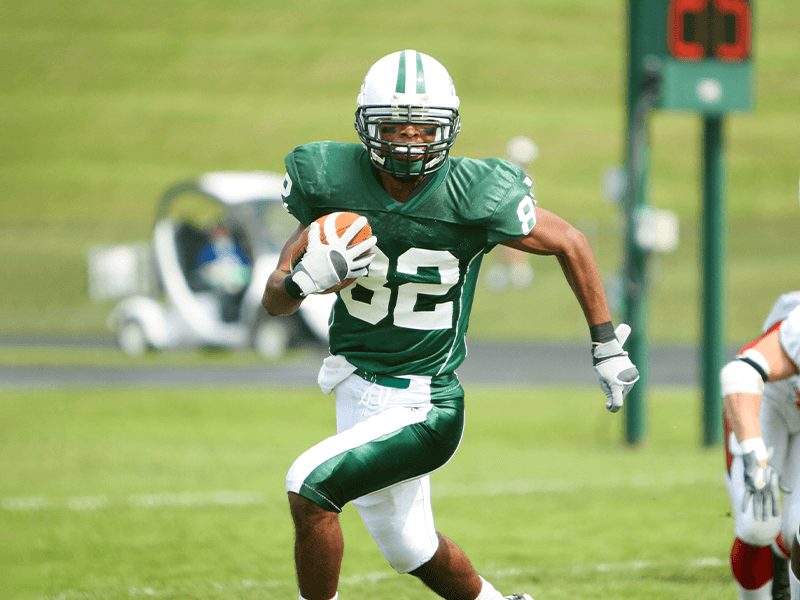Search
Find a Physician
Blog
Dec 9, 2021
Concussions are traumatic brain injuries (TBIs) that affect your brain function—at best temporarily. Scientists have followed professional athletes throughout their careers and reported on the detrimental long-term effects of TBIs.
Over the past 20 years, we have witnessed a rapid transformation in how everyone, from the scientific community to sporting organizations, to athletes themselves and legislative bodies, views sport-related concussions (SRC). Thankfully there is progress in TBI studies and causes as well as treatments.
Concussions in young athletes are both avoidable and preventable. Young athletes can avoid traumas or concussions by playing safer and using proper equipment and techniques.
Similarly, concussions in teenage athletes seem to be commonplace, especially in football, soccer, among other sports, where falls and contact happen often and repeatedly. Unfortunately, concussions happen in female and male athletes, as teens or children, and are more likely to occur in those that have experienced even one concussion.
Consider this article a heads up in concussion training and a guide to preventing TBIs from a young age.
It is common to have multiple concussions in athletes. Often athletes need to practice the same drill repeatedly before it’s mastered, thus, opening the door to potential concussions if practiced improperly. Those who have experienced concussions had a 3-5 times greater risk of additional concussions than those who never experienced one.
According to the NCBI, over 12 percent of young athletes experience concussions in their athletic careers. Further, female athletes have a 1.5 times higher concussion risk than their male counterparts.
Sports that have a statistically higher rate of concussions:
● Martial arts
● Boxing
● Wrestling
● Football
● Track and field
● Cheerleading
It might surprise parents or coaches to read this list. However, all sports and activities have the potential for concussions and other sports-related injuries.
Concussions in young athletes are not uncommon. Everything from poor spatial management to a misstep can cause an athlete to fall and injury themself in some way. Even the best athletes of any age are at risk for injury, so it is a matter of time and circumstance.
Concussions in teenage athletes can affect future performance both in school and on the field. Any TBI can affect an athlete’s growth and development in the classroom affecting their ability to focus or concentrate.
Boxers and wrestlers are known to have delayed motor skills as their careers progress, and reduced cognitive function. What would it look like to avoid that altogether?
Again, concussions in young athletes are preventable. Studies show that young athletes are more susceptible than adults to concussions. Further research suggests that there is a more prolonged disturbance of the brain than previously thought, meaning the damage is more impactful than suspected.
Sometimes symptoms of a concussion are latent or subtle. Often they last for days but can last for weeks or longer. What should parents look for?
Symptoms of concussion include:
● Brief amnesia
● Headache
● Confusion
● Headache
● Tinnitus
● Vomiting
● Fatigue
● Blurry vision
● And more
Parents, coaches, and teachers should be aware of changed behaviors and potential symptoms. Any change in attitude, mood, or performance should be the first flag to look for before investigating further. When in doubt, seek professional assistance and insight.
Concussions in teenage athletes or younger can be avoided or at least minimized. To start, coaches and parents can encourage proper play and ensure proper technique and equipment usage.
Education might be the most crucial first step in preventing concussions in youth sports. Teaching athletes and coaches about what to look for in concussions can help everyone know when to stop and recover. For example, if they do not know blurred vision or dizziness is a symptom, they might not know when to stop.
Trust that athletes know their bodies best when they err on the side of caution.
Here are a few ways to empower the athlete to avoid concussions or injuries in sports:
● Teach athletes what to look for in a TBI or injury
● Regularly check equipment for malfunction or tears
● Build an arena of awareness so athletes are comfortable talking about injuries or potential injuries
Again, it may be hard to determine if your child has a concussion or maybe a mild injury. Symptoms vary from incident-to-incident and child-to-child.
If you are unsure, always consult a professional. A reputable doctor will evaluate your child and determine if additional computerized neuropsychological testing needs to be performed. These tests help determine reaction time, memory, and concentration—and they do not hurt.
Professionals suggest performing a baselines test before each season so that if any event occurs, parents can compare the results.
Every concussion is a significant event. Repeated head traumas in athletes can cut their careers short and limit their potential. Unfortunately, only trained medical professionals that specialize in concussion training can diagnose a concussion or rule it out.
The Orthopedic Institute of New Jersey is one of the best NJ sports concussion centers in the northeast. It provides baseline testing before any injuries are present and helps athletes diagnose any problem with more accuracy. The team at OINJ is trained in diagnosing a concussion and prescribing and performing any follow-up testing. Contact OINJ today for more information.
This article was reviewed and approved by an orthopedic surgeon as we place a high premium on accuracy for our patients and potential patients.